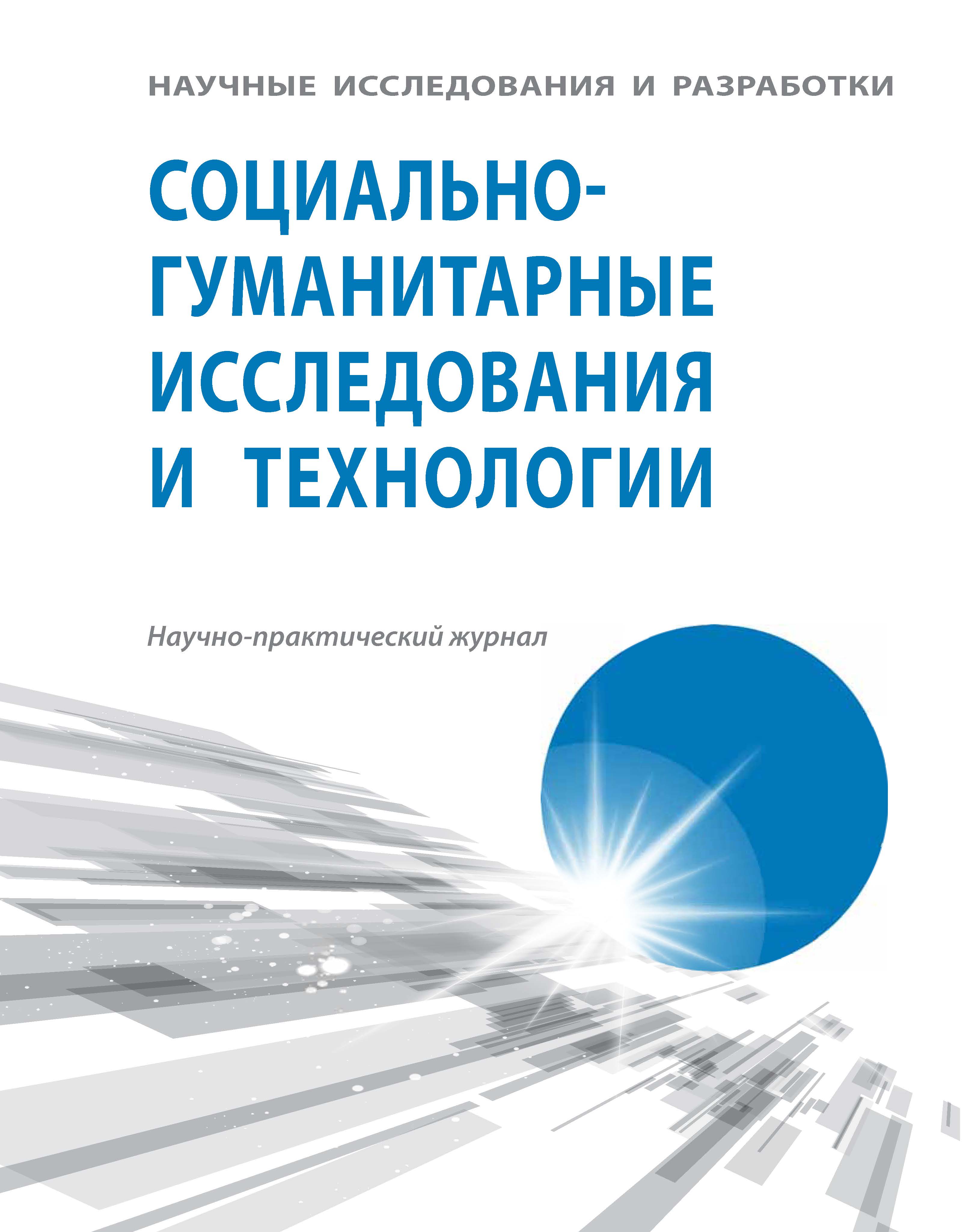Россия
Анализ развития хореографического образования в условиях цифровизации общества задает не только определенные стандарты образовательного процесса, но и формирует инновационные модели развития хореографического искусства в целом. Для изучения данного вопроса использовались научные методы анализа, а результаты демонстрировали становление современных стандартов подготовки и инновационных методов обучения хореографов в мировой педагогике, связанных с внедрением цифровизации, так как оно способствует формированию международного сотрудничества образовательных учреждений и потенциальных работодателей. А заимствование опыта сильнейших вузов позволит адаптировать новые условия подготовки хореографов к современным тенденциям образования, гармонизировать инновационные подходы с традиционными этапами подготовки, повысить уровень, качество и сбалансированность учебного процесса в хореографических отделениях. Цифровизация общества позволяет разработать уникальный подход к инновационной подготовке хореографов, обогащая курс разнообразными комбинациями, сложенными из традиционных и инновационных аспектов развития искусства в целом. И дальнейшее развитие хореографического образования – это гармонизация систем обучения.
современная хореография, высшее хореографическое образование, современные тенденции развития хореографического искусства, цифровизация общества, система и уровень образования
1. Bazela D., Pavliuk T., Babych O., Batieieva N., Kyzim P. (2022a). Contemporary global trends in choreographic art development at the beginning of the 21st century. SPORT TK-Revista EuroAmericana de Ciencias del Deporte, 60. URL: https://doi. org/10.6018/sportk.536581
2. Brannigan E. (2022). Dance and Minimalism. In Choreography, Visual Art and Experimental Composition 1950s-1970s (pp. 86–131). Routledge. URL: https://doi.org/10.4324/9781003253556-4
3. Bresnahan A. (2019). Dance rhythm. In The philosophy of rhythm (pp. 91–98). Oxford University Press. URL: https://doi. org/10.1093/oso/9780199347773.003.0006
4. Carey K., Moran A., Rooney B. (2019). Learning Choreography: An Investigation of Motor Imagery, Attentional Effort, and Expertise in Modern Dance. Frontiers in Psychology, 10. URL: https://doi.org/10.3389/fpsyg.2019.00422
5. Eddy M. (2009), ‘A brief history of somatic practices and dance historical develop-ment of the field of somatic education and its relationship to dance’, Journal of Dance and Somatic Practices 1: 1, pp. 5–27, DOI:https://doi.org/10.1386/jdsp.1.1.5/1
6. Gang Y., Zhang, B. (2022). A Study of Choreography Courses for Musical Theater Majors. Studies in Art and Architecture, 1(1), 8–13. URL: https://doi.org/10.56397/saa.2022.12.02 EDN: https://elibrary.ru/IFARVV
7. Grosz M.P., Lemp J.M., Rammstedt B., Lechner C.M. (2021). Personality change through arts education: A review and call for further research. Perspectives on Psychological Science, 174569162199185. URL: https://doi.org/10.1177/1745691621991852 EDN: https://elibrary.ru/KCQKGI
8. Hanna T.L. (1987). Somatics: Reawakening the Mind’s Control of Movement, Flexibility, and Health. Da Capo Press.
9. Järvis M., Tambovceva T., Virovere A. (2021). Scientific innovations and advanced technologies in higher education. Futurity Education, 1(1), 13–22. URL: https://doi.org/10.57125/ FED.2022.10.11.2
10. Khalid F. (2018). The choreography of talent development in higher education. Higher Education Studies, 9(1), 40. URL: https://doi.org/10.5539/hes.v9n1p40
11. Lester S. (2014). Professional standards, competence and capability. Higher Education, Skills and Work-Based Learning, 4(1), 31–43. URL: https://doi.org/10.1108/heswbl-04-2013-0005
12. Mattingly K. (2022). Modern and Postmodern Dance. In Milestones in Dance History (p. 108-133). Routledge. URL: https:// doi.org/10.4324/9781003185918-5
13. Norton F. (2020). Developing critical thinking and professional identity in the arts through story. In Practice-Focused research in further adult and vocational education (pp. 121–144). Springer International Publishing. URL: https://doi.org/10.1007/9783-030-38994-9_7
14. Portnova T.V. (2020) Familiarly with the methods of scientific research in choreographic art at the level of the master’s program. World of Science. Pedagogy, [online] 4(8). Available at: https//mir-nauki.com/PDF/51PDMN420.pdf (in Russian).
15. Silva F.V. d., Vitiello J.Z. (2019). Modern dance. Revista dos Trabalhos de Iniciação Científica da UNICAMP (26). URL: https://doi.org/10.20396/revpibic262018446
16. Spatz B. (2017). Choreography as research. In Contemporary choreography (p. 68-83). Routledge. URL: https://doi. org/10.4324/9781315563596-7
17. Stevens K., Huddy A. (2016). The performance in context model: A 21st century tertiary dance teaching pedagogy. Research in Dance Education, 17(2), 67–85. URL: https://doi.org/10.1080 /14647893.2016.1178714
18. Sun Y. (2022). Teaching of dance choreography course based on multimedia network environment. Journal of Environmental and Public Health, 2022, 1–10. URL: https://doi. org/10.1155/2022/8627822
19. Trach Y., Tolmach M., Chaikovska O., Gumeniuk T. (2020). Problems of cultural heritage preservation in the context of the armed conflict growth. In IFIP advances in information and communication technology (p. 31–44). Springer International Publishing. URL: https://doi.org/10.1007/978-3-030-48939-7_4 EDN: https://elibrary.ru/UARNGO
20. Tsekhmister Y. (2023). Effectiveness of case-based learning in medical and pharmacy education: A meta-analysis. Electronic Journal of General Medicine, 20(5), em515. URL: https://doi. org/10.29333/ejgm/13315
21. Tsekhmister Y. (2021). The problem of pedagogical innovations and trends in the development of the educational environment. Futurity Education, 1(2), 22–30. URL: https://doi. org/10.57125/FED/2022.10.11.16
22. Volbea B. (2018). Contemporary Dance Between Modern and Postmodern. Theatrical Colloquia, 8(1), 307–315. URL: https://doi.org/10.2478/tco-2018-0011
23. Zafeiroudi A. (2021). Intersections between Modern and Contemporary Dance and Yoga Practice: A Critical Analysis of Spiritual Paths through Body Movement and Choreography. Academic Journal of Interdisciplinary Studies, 10(4), 1. URL: https://doi.org/10.36941/ajis-2021-0094 EDN: https://elibrary.ru/AIFMPN






